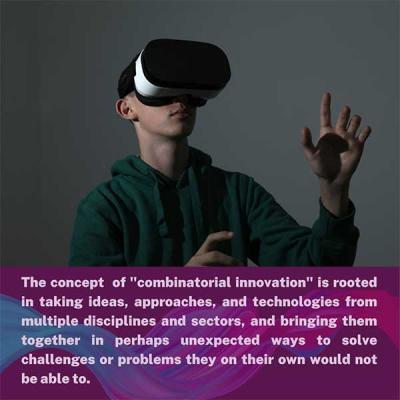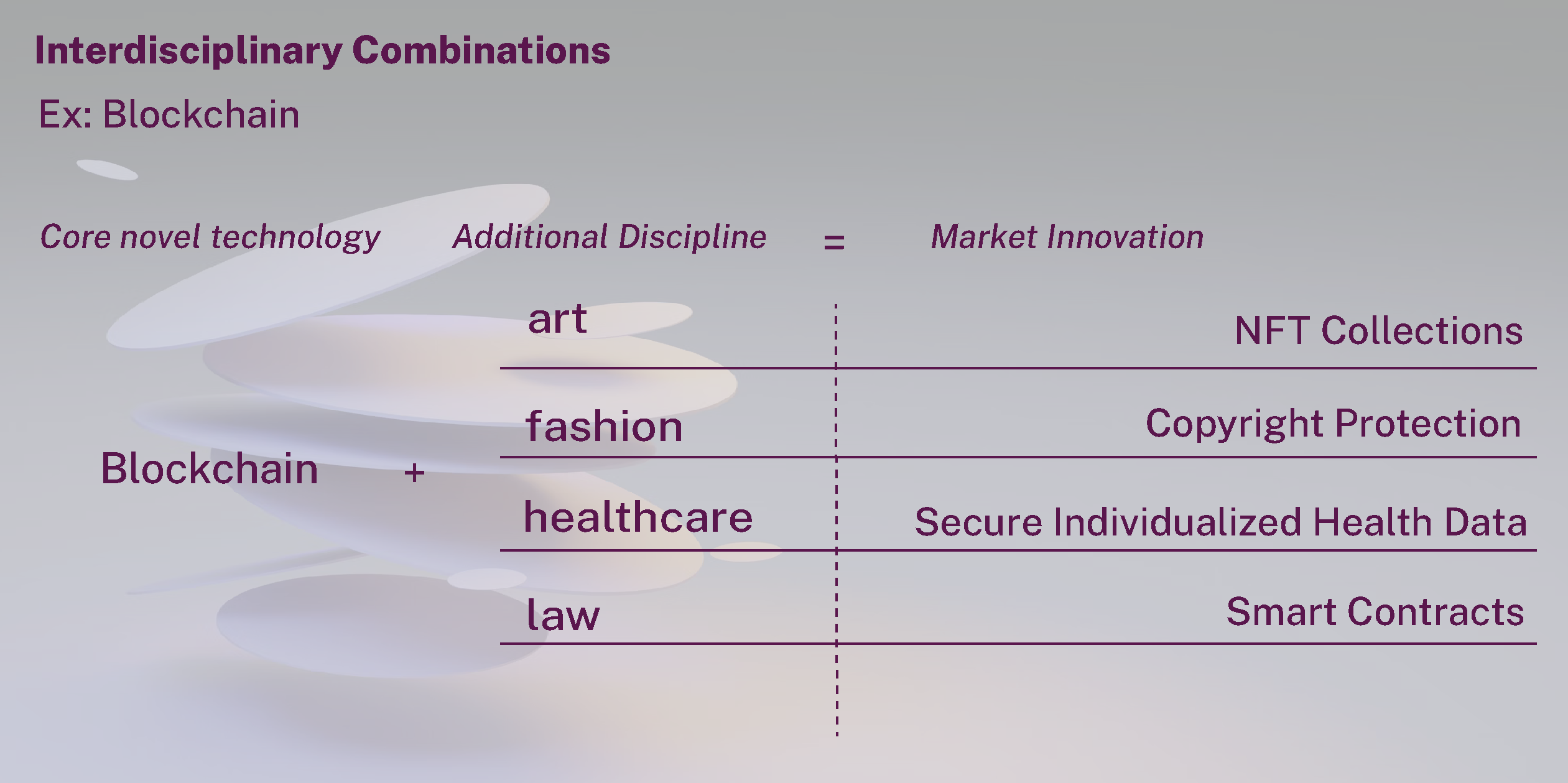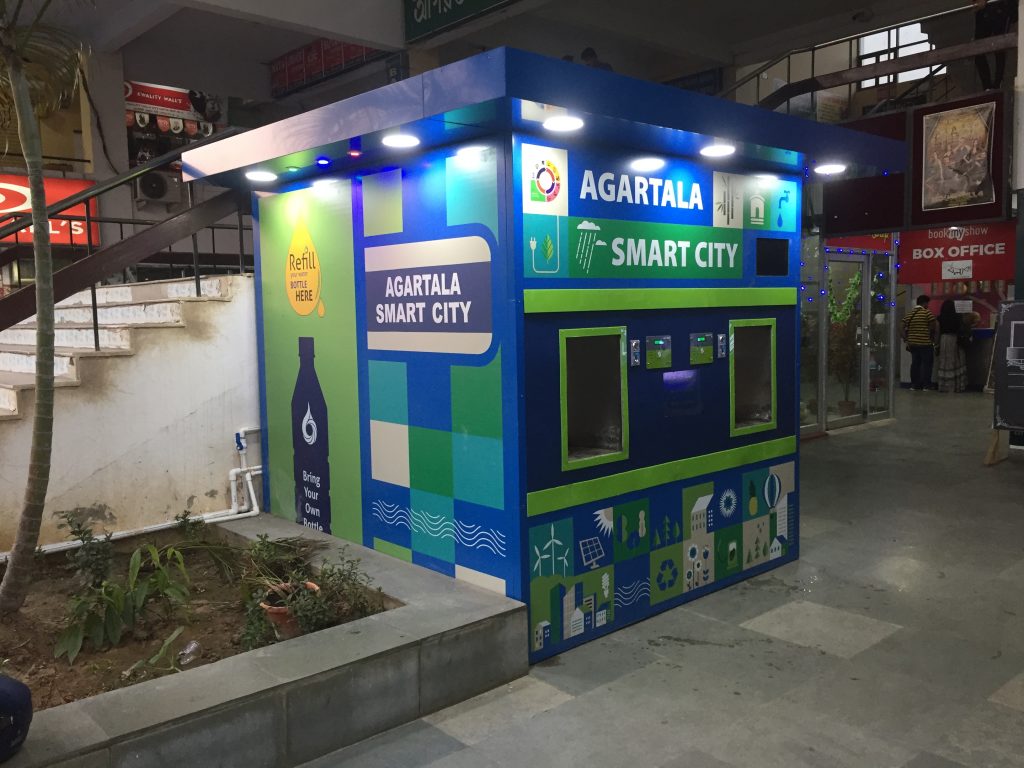Interdisciplinary Innovation
How divergent backgrounds and technologies converge to build tomorrow's solutions
In our latest series of articles, we have been exploring what it means to commercialize innovation… Our last article focused primarily on technology-transfer and finding funding and commercialization solutions for lab-oriented, research-based innovation. This in particular is the kind of innovation we see most often in deep-tech (which we’ve talked a lot about with our experts here), yet isn’t so often the type of innovation we most commonly see on the market. In many ways the innovator of today isn’t necessarily just the “inventor” archetype of yesterday, guided only by deep knowledge of a singular topic. Rather, a type of innovation we see more often is called “combinatorial innovation.” What is combinatorial innovation, and how can you make it work for your innovation process? Read on to find out.

Most innovators would not necessarily describe themselves only as inventors… What they are actually doing is solving challenges or finding opportunities through weaving together multiple threads of knowledge so that systems informed by different backgrounds, processes, and aims separately, can come and work together to solve an issue that requires all of them in equal measure. In addition to developing a core technology, they are often applying innovation in new ways, and doing so in tandem with other disciplines and approaches. Many in the innovation space refer to this as “combinatorial innovation”, or the practice of using components of different technologies and trends together to uncover new or better value. The term “combinatorial innovation” was championed by Google’s chief economist, Hal Verian, who used it to describe the processes of innovation Google was most trying to take advantage of, both internally and in its acquisitions.
The concept is rooted in taking ideas, approaches, and technologies from multiple disciplines and sectors, and bringing them together in perhaps unexpected ways to solve challenges or problems they on their own would not be able to. It’s applied science, but in a way that brings together disciplines as varied as they are useful, from design and sociology, linguistics to biology, all interfacing with next-generation computer science and technology. While this might feel overwhelming in some ways, it’s actually liberating for the typical founder- It is not necessary to reinvent the wheel entirely just to gain a competitive advantage. It isn’t even the number of different disciplines; it might just be two. The most essential element is thinking through the ways those two or more technologies might leverage one another to enhance their collective value. The whole, in effect, is greater than the sum of its parts.
This might seem abstract, but in reality, most of the innovation one experiences is the product of a synthesized approach like this. Historically, the most disruptive and long-lasting products were not built through a single, emergent technology. Rather, they were built through a combination of new innovation coupled with existing technologies, and new business models that appealed to customers. Products built on just one innovative, but independent, technology often struggle to achieve wide adoption on their own.
This kind of innovation isn’t necessarily new; a lot of the products we use every day are examples of this… Apple products and innovations are one key example, where divergent trends in media consumption, computer technology, and industrial design converge in a singular synthesized product, like the iPod or iPhone. More broadly though, the proliferation of personal computers and handheld devices follows this trend, where the pure computer technology from the 60s through 80s becomes distilled and implemented in consumer-friendly ways. It became a question not of the fastest or most efficient hardware or software, but rather how those core technologies might be utilized best towards actually serving the needs of the consumer.
 We can see this becoming more meaningful in real time as the vanguard of innovation today is the application of new technologies to increasingly diverse fields. So much of the latest innovation in artificial intelligence, blockchain, or other new technology is yet to even be fully explored, as we are only now coupling it more completely with the way people live their lives. Future technology is going to be almost entirely oriented on this threading of multiple disciplines… Next generation voice assistants not only need artificial intelligence and machine learning, they need linguistics experts to allow them to “hear” and to “speak”, not just mimicking human intelligence and voice, but actually listening and understanding. Innovations like Neurolink require the close collaboration of computer scientists with biomedical engineers, neurologists, and the latest health imaging technology. Smart cities require not only arrays of sensors and AI to sift through the data, but also the insight of urban planners, traffic experts, and designers to make spaces which are actually useful. Non-fungible tokens only became mainstream when the equation became “blockchain + art”... Soon, “blockchain + law” will enable smart contracts, or “blockchain + healthcare” enabling protected individualized health data, like in the work of GIST-alumni Liber Health. One only needs to take even a singular technology, couple it with a meaningful context, and the recombinatory innovation takes off.
We can see this becoming more meaningful in real time as the vanguard of innovation today is the application of new technologies to increasingly diverse fields. So much of the latest innovation in artificial intelligence, blockchain, or other new technology is yet to even be fully explored, as we are only now coupling it more completely with the way people live their lives. Future technology is going to be almost entirely oriented on this threading of multiple disciplines… Next generation voice assistants not only need artificial intelligence and machine learning, they need linguistics experts to allow them to “hear” and to “speak”, not just mimicking human intelligence and voice, but actually listening and understanding. Innovations like Neurolink require the close collaboration of computer scientists with biomedical engineers, neurologists, and the latest health imaging technology. Smart cities require not only arrays of sensors and AI to sift through the data, but also the insight of urban planners, traffic experts, and designers to make spaces which are actually useful. Non-fungible tokens only became mainstream when the equation became “blockchain + art”... Soon, “blockchain + law” will enable smart contracts, or “blockchain + healthcare” enabling protected individualized health data, like in the work of GIST-alumni Liber Health. One only needs to take even a singular technology, couple it with a meaningful context, and the recombinatory innovation takes off.
While it can be a fun thought exercise, this type of interdisciplinary innovation is serious business too. Many of what we would describe as the “Grand Challenges” of the next decades will require this type of innovation and interdisciplinary thinking. Chief among them is climate change, and the varying scales of global challenges it will bring. From artists to doctors, statisticians to materials sciences, each discipline will have something meaningful to contribute to this struggle. Their individual implications are limited however… Only through threading together a diversity of many disciplines and experiences into a collective and collaborative response will we be able to tackle such a divergent challenge in an equally distributed way.

These kinds of challenges are being met head-on by many in our community of GIST innovators. One great example is the work of founder Rituparna Das and her company Hydrotec Solutions. Her team has created a series of IoT enabled smart water kiosks and filtration systems all throughout India. In her work, she has threaded together multiple technologies to work with one another in an effort to create a novel, socially-embedded solution to water scarcity. It wasn’t enough to develop on the sensors alone, or the filtration technology alone; it was coupling those technologies with a form that makes sense in the cultural context, and weaves together multiple approaches, from design to social and technological insights, together. What we can see in her work, and in the work of innovators like her the world over, is the power of coupling unique innovation with a go-to-market strategy that synthesizes and takes inspiration from other disciplines to create something truly effective.
For innovators at all levels, whether you’re a founder, a part of any team, or even an investor, this type of innovation is a key way to build community, challenge oneself, and catalyze creativity. For all kinds of innovators, particularly ones who are pioneering their own research like so many in the GIST community, this kind of insight and development can be an enormous advantage in defining a lab-to-market process, one that will embed your innovation into the larger world in a way that will absolutely maximize its impact.
Subscribe to our newsletter and follow us on social media for more content and for further resources on developing lab-to-market strategy delivered straight to your inbox. We will be exploring more commercialization strategies and getting key insights from experts in the field; you won’t want to miss the kind of insights that will set your venture apart from the rest!


